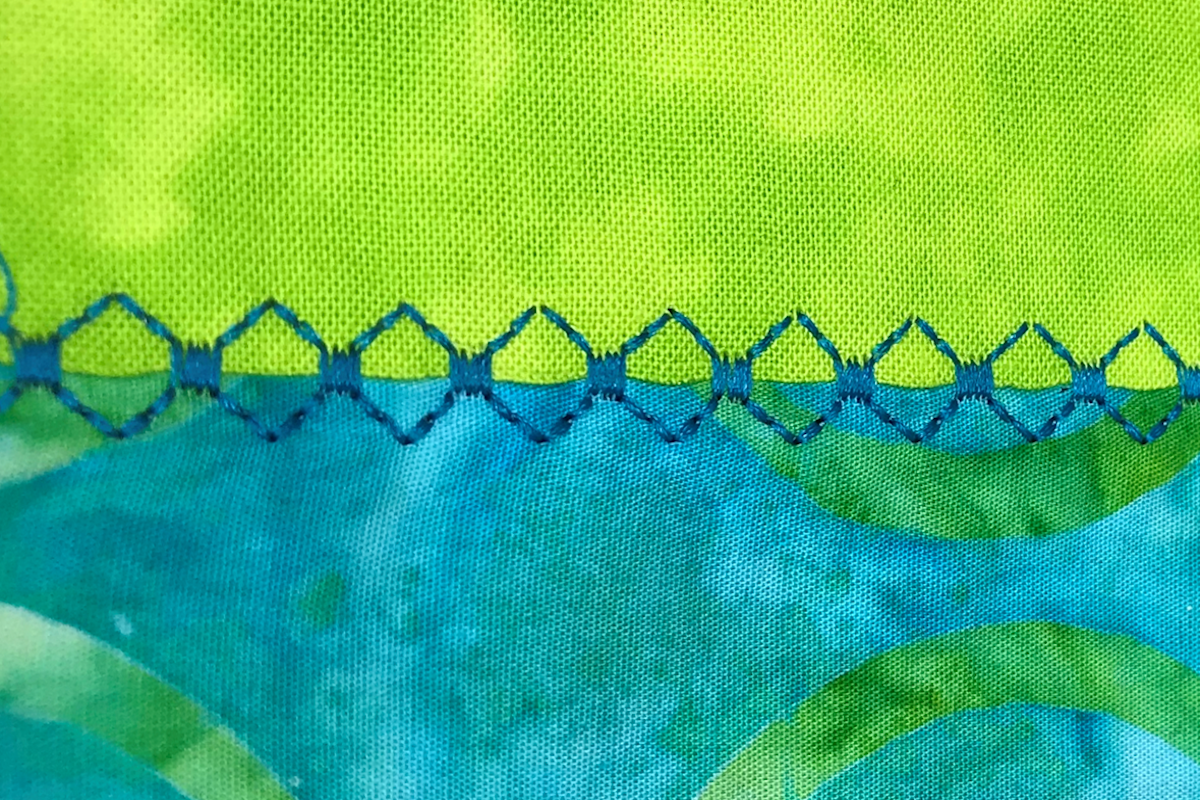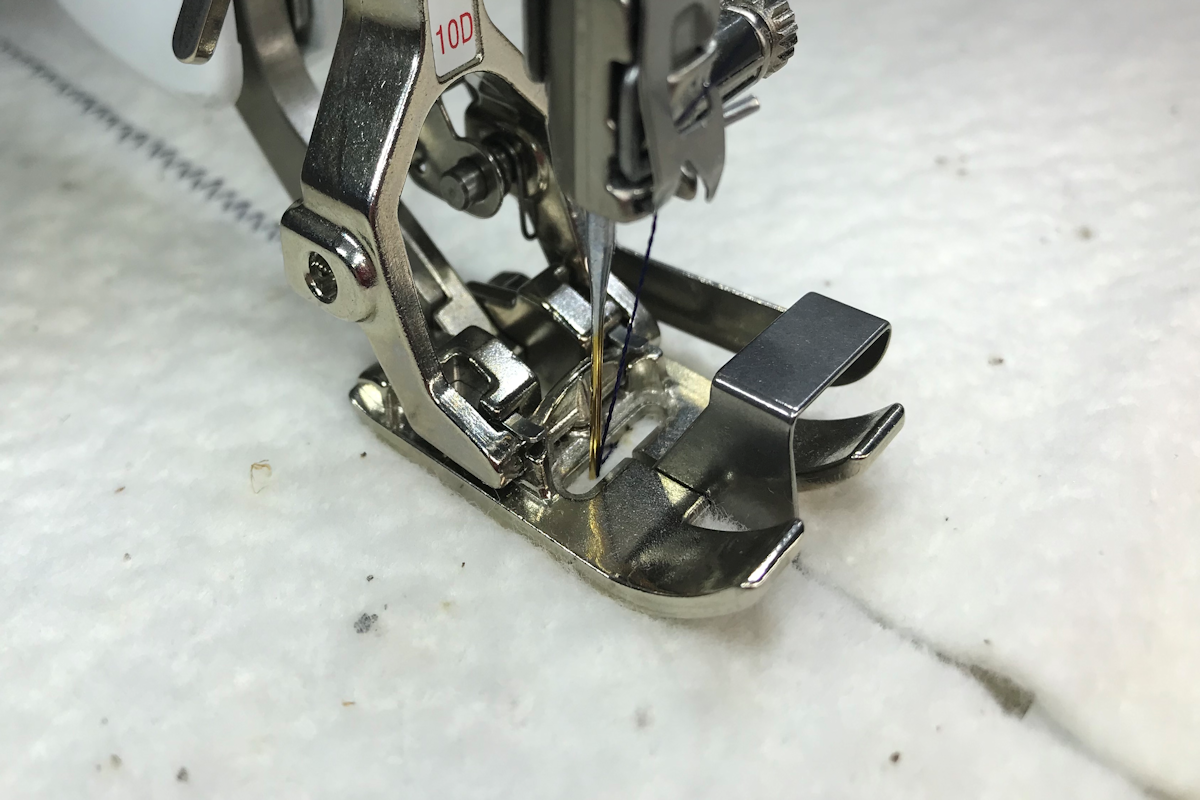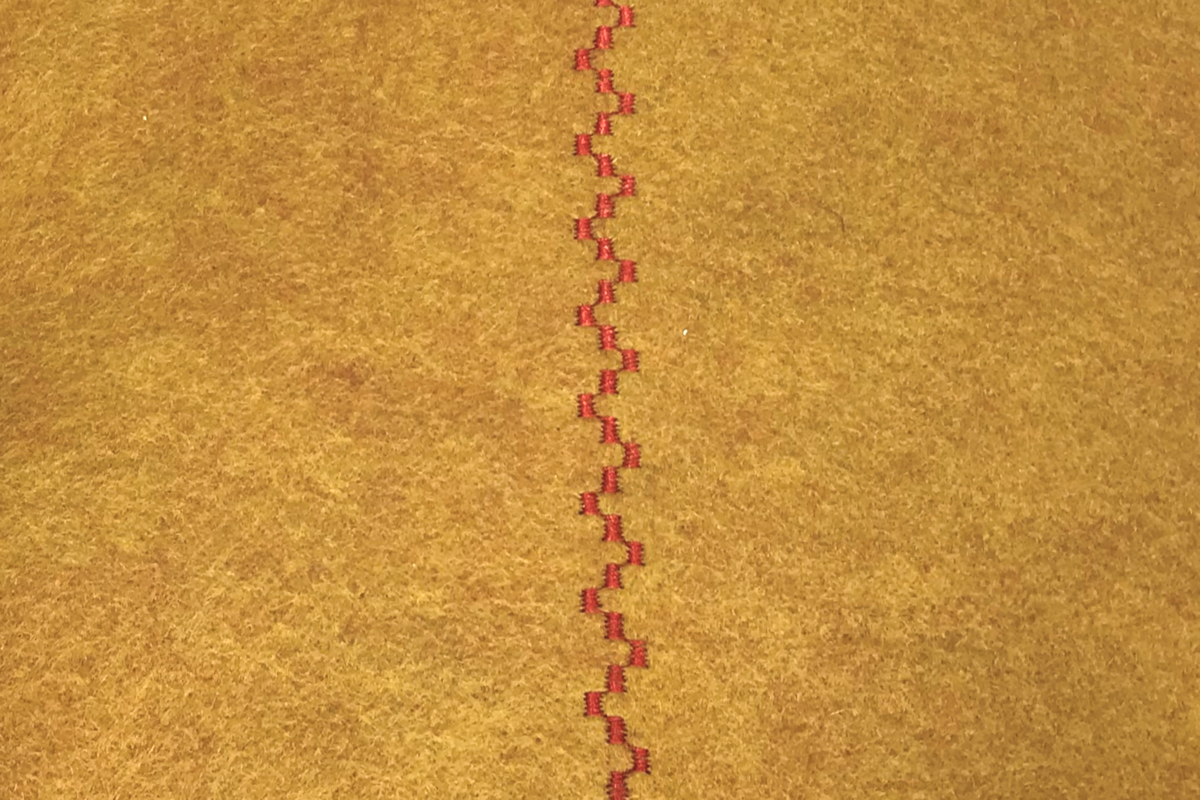When we think of a seam, it is usually two pieces of fabric placed right sides together and sewn with a straight stitch to join them. Once the seam is stitched, the fabric is opened to the right side and pressed. This type of seam works on most fabrics and projects but there are other types of seams. One is called an edge joining seam and is a fun way to create decorative, bulk-free seams.

Edgestitch Foot
The seam is made by folding the seam allowance to the wrong side on each piece of fabric and placing the folds edge to edge. They are then stitched together using a side-to-side decorative stitch. The trick to this technique is keeping the fabrics side by side without overlapping as they are stitched. The best way to do this is to use an edgestitch foot. The center guide of the foot keeps the edges separate as they go under the foot and then they are pulled together as it goes under the needle. You can use an all-purpose or open embroidery foot for this but it is very difficult to keep the fabric edges from overlapping. The edgestitch foot keeps that from happening.

Wool and Felt Seams
If the fabric does not ravel, such as felt or wool, the seam allowances may be trimmed, and the fabric placed edge to edge before stitching. This is a good seam for thick fabrics as it reduces bulk, flattening the seam for a beautiful, clean look. This technique makes the seams almost invisible. It’s hard to tell that the photo below is of two pieces of fabric joined together!
Practical, Not Decorative Seams
This same joining technique can be used in a practical way to join pieces of batting using a zigzag stitch. This is a great way to make use of leftover batting pieces for your next quilt!

Join the Sewfeet Community!
Click here to sign up for our newsletter and join the Sewfeet Community! Once a month, I’ll send you sewing tips and let you know about new blog posts so you can keep up with all the fun things I want to share with you. Thanks for stopping by and I’ll “see” you soon!



